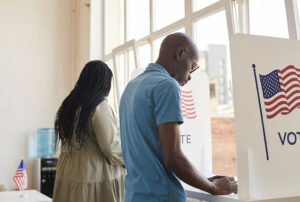
May 31, 2016; New York Times
While the country took pause this week on Memorial Day to remember the men and women who have served the nation, some veterans were marching outside Trump Tower in a show of solidarity against Donald Trump, who has been under pressure for months to reveal how much money was collected and distributed in his very public veterans fundraiser in January. At a press conference on Tuesday at his building in Manhattan, Trump begrudgingly revealed $5.6 million had been distributed to veteran groups, all the while chastising the media for trying to hold him accountable to the public.
“I raised close to $6 million…as of this moment, it’s $5.6 million,” said Trump at the press conference. “Zero dollars have been taken out for administration.” Those who have been following NPQ’s coverage of Trump’s veteran donations will recall that the figure of how much was actually raised has changed multiple times in the last five months. However, this newly released list of veterans groups with a new figure may finally give us some answers.
At the time of the fundraiser in January, Trump indicated $6 million had been raised, though he would not divulge which groups were receiving the donations. Months later, after much poking and prodding by the media, that $6 million figure was rectified in mid-May to $4.5 million by Corey Lewandowski, Trump’s campaign manager.
As NPQ conjectured months before and Lewandowski has now admitted, the $6 million figure took into account pledges of donations that Trump did not have in hand, but had been promised to come in. Some of these promised donations from Trump’s wealthy friends never materialized, leaving veteran groups with approximately $1.5 million less than originally anticipated.
So far, so good—this has occurred in many campaigns. “There were some individuals who he’d spoken to, who were going to write large checks, [who] for whatever reason…didn’t do it,” said Lewandowski in a telephone interview with the Washington Post. “I can’t tell you who.” But the timing of everything seems to indicate that many of the promised dollars ended up at veterans’ organizations only in response to the Post’s dogged refusal to let the issue go. Last week, Trump also announced he was donating $1.1 million of his own personal money to a veterans group, Marine Corps—Law Enforcement Foundation.
Sign up for our free newsletters
Subscribe to NPQ's newsletters to have our top stories delivered directly to your inbox.
By signing up, you agree to our privacy policy and terms of use, and to receive messages from NPQ and our partners.
Now, it seems like the clouds are clearing and the public is getting some clarity on the issue. At the very least, the math is finally adding up. With the $4.5 million that was netted in the January fundraiser and Trump’s own $1.1 million donation, it does indeed total $5.6 million for veteran groups. However, it’s hard to forget that it took nearly five months to get to this point.
So which groups got the money? A list of the groups posted on Trump’s campaign shows not only their names, but also the allotted amount of the $5.6 million they each received. Readers may remember Trump originally released a list of 22 veteran groups that would be receiving the donations. All the original 22 organizations are included on the list. The Mulberry Street Veterans Shelter was incorrectly named in the original list and now appears with its correct name, Central Iowa Shelter and Services, and a $100,000 donation. The list also includes Project for Patriots, another organization included on the original list, which is still awaiting approval for its tax-exempt status.
This simple request for transparency has taken five months to deliver despite many media requests. In fact, Trump said to the Washington Post, “Why should I give you records? I don’t have to give you records.” Of course, by denying the media access to his philanthropic affairs, Trump is also denying the same courtesy to the American public, including the veterans for whom he has presumably been raising this money.
At the press conference on Tuesday, Trump’s statement was a conundrum, “The money’s all been sent. I wanted to keep it private. If we could, I wanted to keep it private, because I don’t think it’s anybody’s business if I want to send money to the vets.” But most of the money was not his, and he is the one who made a media event of the whole situation, inviting the public in to admire him.
“The press should be ashamed of themselves. And on behalf of the vets, the press should be ashamed of themselves,” said Trump at the press conference. “Instead of being—like, ‘Thank you very much, Mr. Trump,’ or ‘Trump did a good job,’ everyone is saying, ‘Who got it? Who got it? Who got it?’ And you (the press) make me look very bad.”
He may do well to not speak “on behalf of the vets,” some of whom, after all, were protesting just outside the press conference. No amount of the facilitation of other people’s donations gives him that license. But beyond that, as we have said before, this exhibition of philanthropy badly managed and ridiculously defended against public scrutiny should be terrifying to people working in this sector. It indicates disrespect for philanthropy and transparency that is mindlessly deep and uninformed.—Shafaq Hasan













